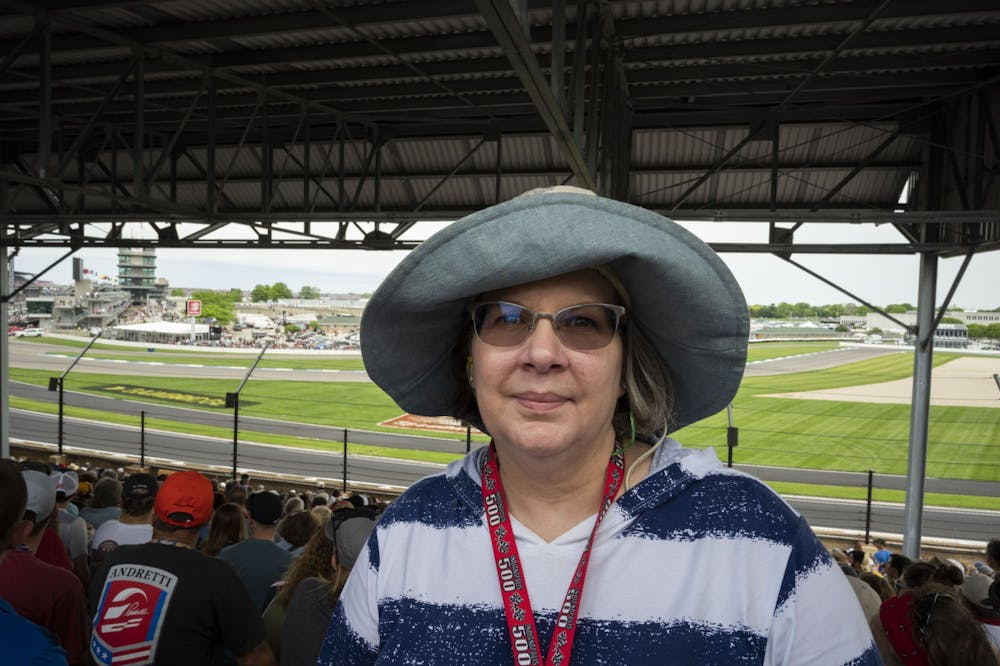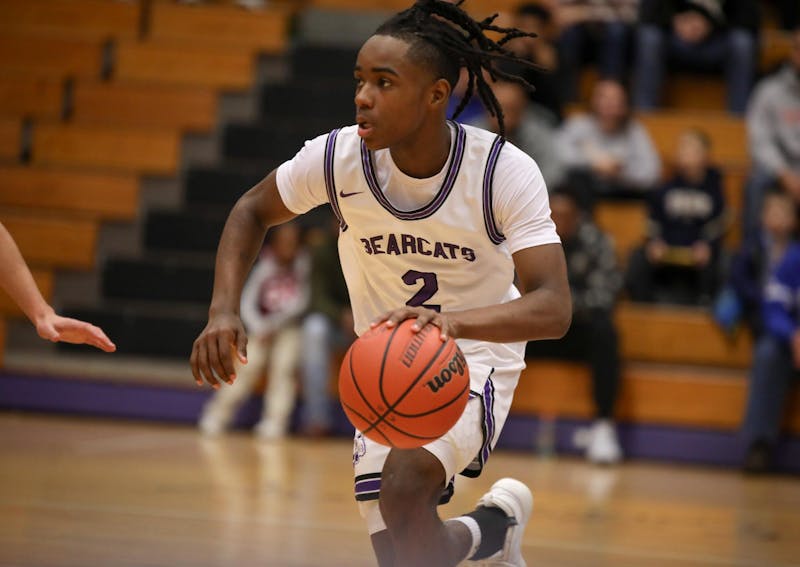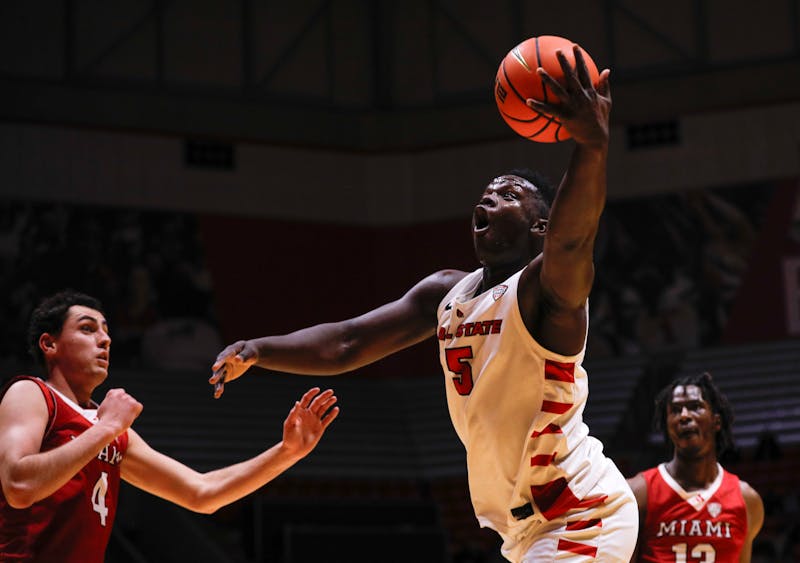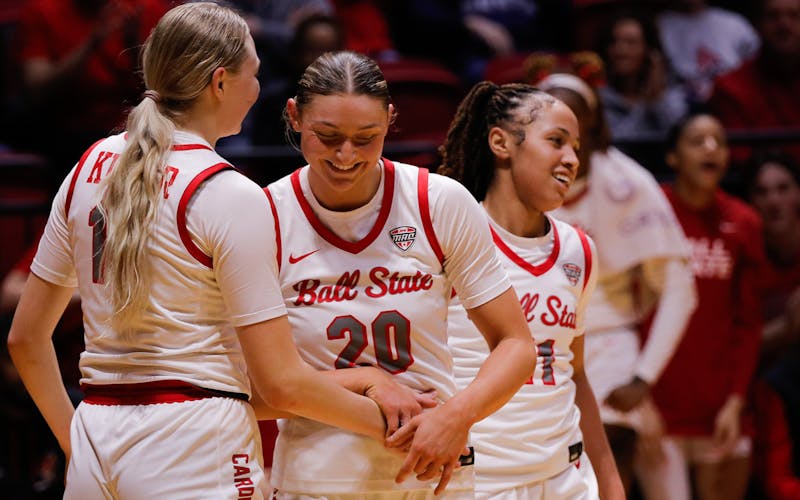Jacquelyn Buckrop had a choice to make in 1989: her friend’s wedding or the Indianapolis 500?
Buckrop was in grad school and had been to 15 consecutive Indy 500s at the time. The wedding was in Fort Wayne, and she said she was torn because she couldn’t make both.
“There was no way I could go to the race, watch the race, get home and drive all the way to Fort Wayne in time for the wedding,” Buckrop said. “I missed that race, but I sat at the rest stop just north of [Muncie] on 69 to listen to the end of it.”
She was back at Indianapolis Motor Speedway (IMS) the next year to start a new Indy 500 attendance streak.
With the 2020 IndyCar season having ended Oct. 25, her situation in 1989 poses a question: What is it about that race that gets people so attached to it? The answer is different for everybody. For Buckrop, it’s family.
“I’m emotional at the start,” she said as tears welled up in her eyes, “Partly because it’s Memorial Day, and I’m also thinking about those that aren’t there. My parents aren’t there. My godparents are no longer there.”
Buckrop, Ball State special assistant for academic operations, was born and raised on the west side of Indianapolis, about 5 miles from IMS. Her parents had gone to the Indy 500 for as long as she could remember. They went to race qualifications on their honeymoon, and they even had friends who knew some of the drivers and car owners. Naturally, Buckrop developed an interest when she was 6 or 7, she said, but her parents didn’t deem her “old enough” to go until she was 11.
Buckrop attended her inaugural Indy 500 with her parents in 1974, sitting in a line of 10 seats in Grand Stand E, Box 24, Row R — the same seats she still sits in every May.
Her godfather, Herb Wolf, purchased those seats well before Buckrop was born, she said, and he shared them with his friends. As Wolf and his friends aged and were no longer able to attend, the seats were shared throughout the families, and Buckrop experienced it all.
“It is a tradition,” she said. “It’s a family tradition.”
Lori Siefker, Ball State ID card office coordinator, has seats right behind the pits at IMS. She has experienced the 500 with Buckrop, and she said it felt like a big reunion.
“She has a lot of her own little traditions,” Siefker said. “It wouldn’t be a 500 without her toasting to her parents. And her brats — she always has her brats. That was something special she had with her mom and dad.”
Buckrop has been to 44 Indy 500s, having only missed the one in 1989 since she started going. She still receives a text every year just to make sure she’s still up for it, and her response has always been some form of confirmation — “yes,” “looking forward to it,” “absolutely,” “I’ll be there.”
However, Buckrop said it has gotten harder to attend as she’s grown older. Every once in a while, she asks herself, “Do I really want to do this again?” — wake up at the crack of dawn, sit in idle traffic for multiple hours just waiting to get in, fight the crowds of thousands of people?
That, and she’s also the last one left.
Everyone who accompanied that wide-eyed 11-year-old girl to her first Indy 500 in 1974 has since died.
“This is something, at this point, I do for me,” Buckrop said while getting choked up. “I’m not passing it on to my children or grandchildren. My parents have been gone long enough that, while I miss them and remember them, this is something I do because I want to and I can.”
Because of this, Buckrop now likes to share her experience with people who have never been to the Indy 500.
“Everyone should go at least once,” she said. “What I usually say is, ‘If you have an opportunity, take it.’ If they follow it up with ‘Well, it’s really not for me,’ I say, ‘If you have an opportunity, you should take it.’”
Buckrop took Angie Zahner, executive assistant to the provost and executive vice president for academic affairs, to her first Indy 500 about 10 years ago. Zahner said she had been to practice several times but never saw the actual race in person.
“They say there is no place like the Indy 500 to experience a race, and they are correct,” Zahner said. “Nothing compares to seeing it in person. [Buckrop] knew I had never had that opportunity and wanted to share it with me. I’ll never forget the experience or her generosity.”
The countdown to “The Greatest Spectacle in Racing” was underway shortly after Josef Newgarden took the checkered flag in the Streets of St. Petersburg Oct. 25. For many, the countdown started when they learned no fans would be allowed at this year’s Indy 500 due to COVID-19. However, IMS President J. Douglas Boles announced Aug. 22 that, due to special circumstances, fans who watched or listened to the race this past August will officially “keep their streak,” meaning Buckrop’s is still alive.
Buckrop said she originally told herself she’d be fine with never going again after 40 races. Now, she’s at 44, and she said she’ll probably wind up telling herself she has to get to 50.
“I’ll keep going until I physically can’t,” she said. “I suspect when I can no longer do this, I will find another way to make this a ritual. When I can no longer be there in person, I will still be listening or watching, and I will do something to make it a new tradition for me.”
Contact Zach Piatt with comments at zapiatt@bsu.edu or on Twitter @zachpiatt13.





The Daily News welcomes thoughtful discussion on all of our stories, but please keep comments civil and on-topic. Read our full guidelines here.